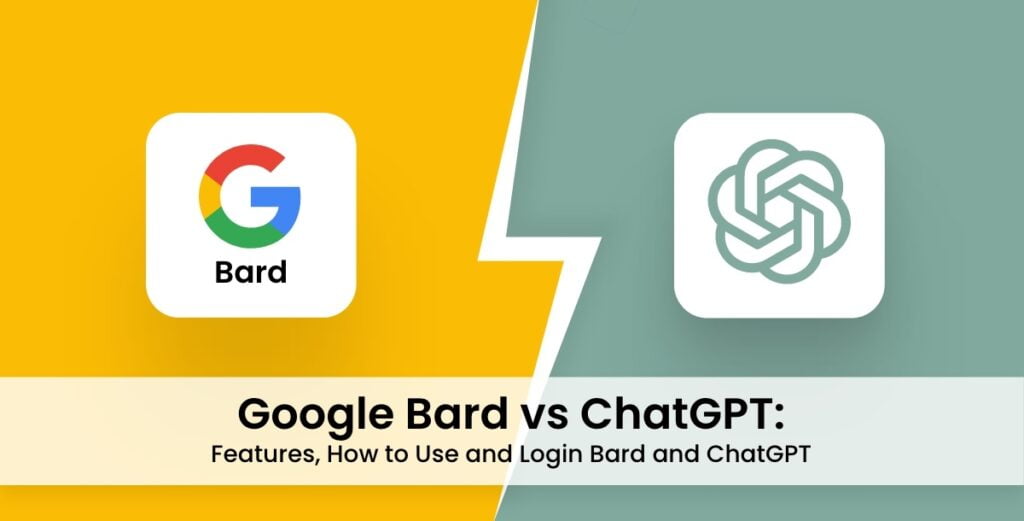In this rapidly evolving digital age, the synergy between human intelligence and artificial intelligence has paved the way for groundbreaking innovations. ChatGPT and Google BARD (Bidirectional Encoder Representations from Transformers) are two remarkable advancements that have revolutionized human-machine interaction.
Their combined capabilities have redefined the boundaries of what is possible in natural language processing and understanding.
This article delves into the intricacies of ChatGPT and Google BARD, exploring their features, applications, and the immense potential they hold for shaping the future.
Read Also: Google Bard vs ChatGPT: Which AI Chatbot is Better?
ChatGPT: Enhancing Conversational AI
1. Understanding ChatGPT
ChatGPT, developed by OpenAI, is a state-of-the-art language model powered by the mighty GPT-3 architecture. With its impressive ability to generate human-like responses, ChatGPT has become a game-changer in conversational AI. It is prepared on a huge corpus of text from different sources, empowering it to comprehend and produce reasonable reactions to an extensive variety of client inputs.
2. Natural Language Generation and Comprehension
One of the critical strengths of ChatGPT lies in its natural language generation (NLG) capabilities. It can generate contextually relevant and coherent responses that mimic human communication, making interactions with AI systems more engaging and user-friendly. ChatGPT’s advanced NLG ensures that conversations flow smoothly, providing users a more immersive experience.
Furthermore, ChatGPT excels in natural language comprehension, enabling it to accurately understand user queries and prompts. It can analyze and interpret complex sentences, grasp nuanced meanings, and retrieve relevant information from its vast knowledge base. This proficiency empowers ChatGPT to provide insightful and contextually appropriate responses.
Read Also: What is Chat GPT and how will help in SEO | Full Guide
3. Applications of ChatGPT
ChatGPT finds extensive applications across various domains. It serves as a valuable tool for customer support, offering prompt and personalized assistance to users. Businesses can leverage ChatGPT to enhance their chatbot systems, ensuring effective and efficient customer interactions.
Furthermore, ChatGPT is widely used for content generation and editing tasks. It assists writers, marketers, and content creators by providing suggestions, improving readability, and aiding creativity. The natural language generation capabilities of ChatGPT make it an indispensable asset in content creation pipelines.
Google BARD: Unlocking Language Understanding
1. Unveiling Google BARD
Google BARD, an acronym denoting Bidirectional Encoder Representations from Transformers, stands as an exemplification of an innovative and sophisticated language model contrived by the eminent technology behemoth, Google. It represents a significant breakthrough in natural language understanding (NLU) and comprehension. BARD is trained on vast amounts of textual data, enabling it to discern patterns, comprehend context, and derive insights from complex language structures.
Read Also: Language Generation with GPT-3: A Game Changer for AI and NLP
2. Bi-directional Training and Contextual Understanding
One of the distinguishing features of Google BARD is its bi-directional training methodology. Unlike previous models that relied on unidirectional training, BARD harnesses the power of both forward and backward language modelling. This bi-directional approach allows BARD to capture a more comprehensive understanding of language and context, resulting in more accurate interpretations and responses.
3. Semantic Understanding and Language Translation
Google BARD’s exceptional semantic understanding capabilities enable it to discern and interpret the meaning behind words, sentences, and texts. By analyzing the semantic relationships within a given context, BARD can generate translations with enhanced accuracy and fidelity. This opens up new possibilities for seamless cross-lingual communication and aids in breaking down language barriers.
Read Also: From Text Completion to Storytelling: The Many Uses of GPT-3
4. Transforming Information Retrieval
Google BARD’s prowess in information retrieval is unparalleled. Its deep understanding of language structures empowers it to fetch highly relevant and contextually appropriate information from vast knowledge repositories. Whether finding answers to complex questions or retrieving specific details from extensive textual sources, BARD provides users with accurate and valuable information.
The Future of Human-Machine Interaction
The possibilities that lie ahead are vast. From personalized virtual assistants and intelligent tutoring systems to improved content creation and translation services, the impact of ChatGPT and Google BARD will only grow stronger. These advancements empower us to explore new horizons and redefine the boundaries of what is achievable in the digital age.

.webp)
.webp)
.webp)
